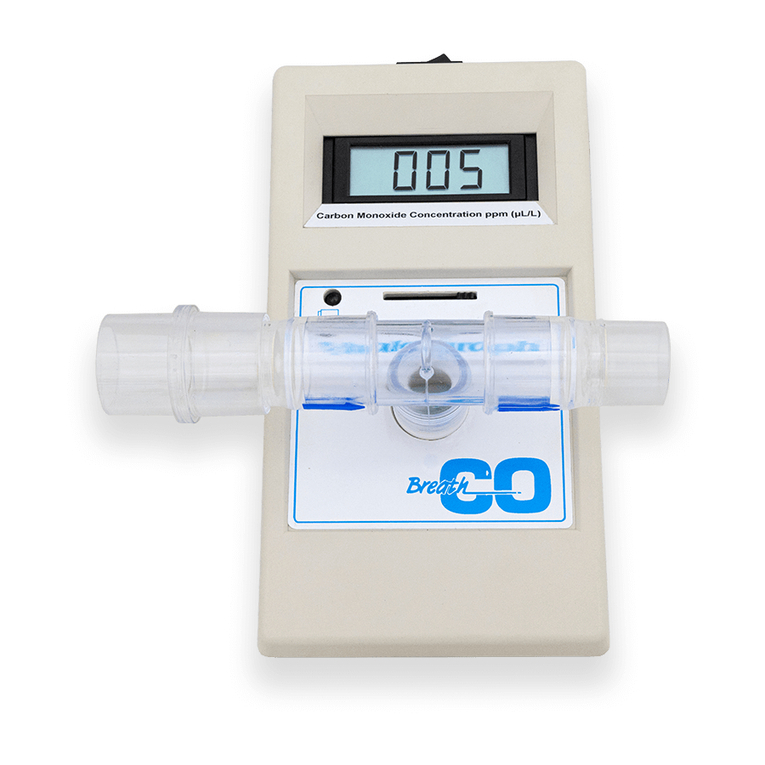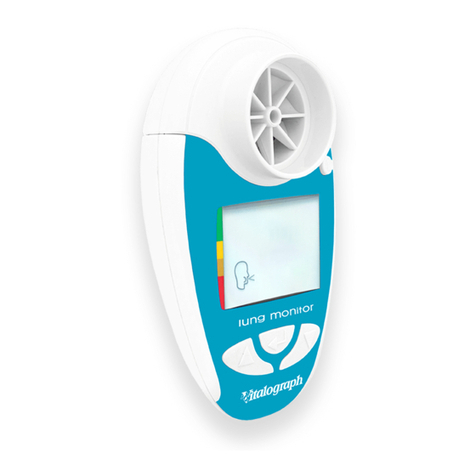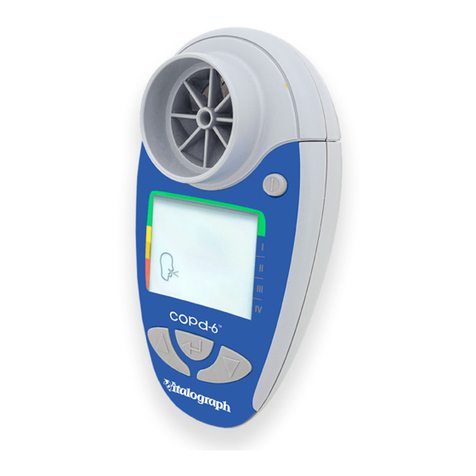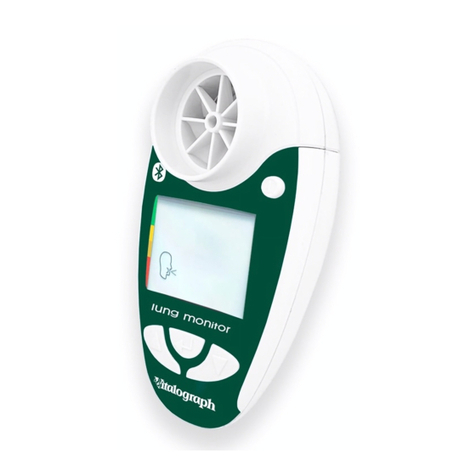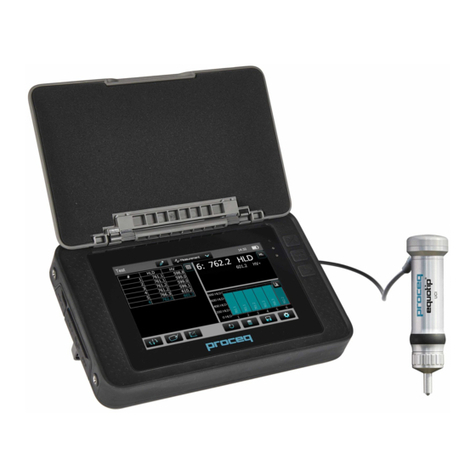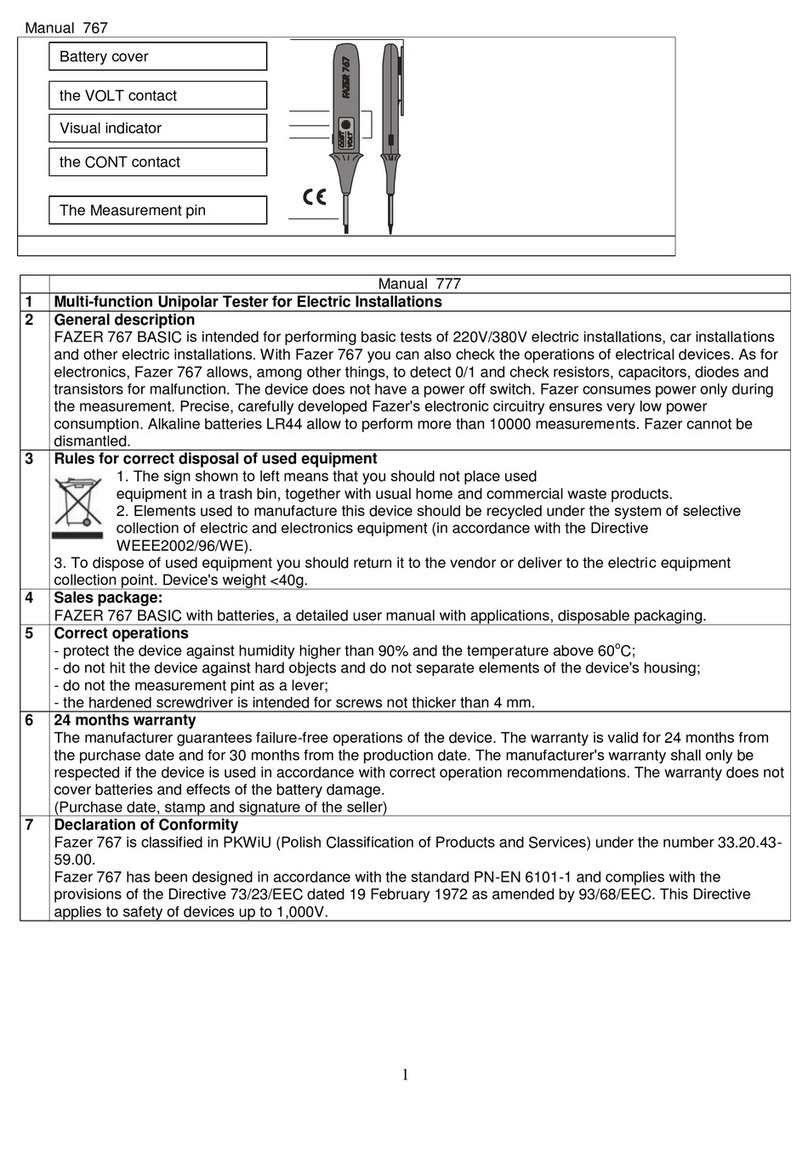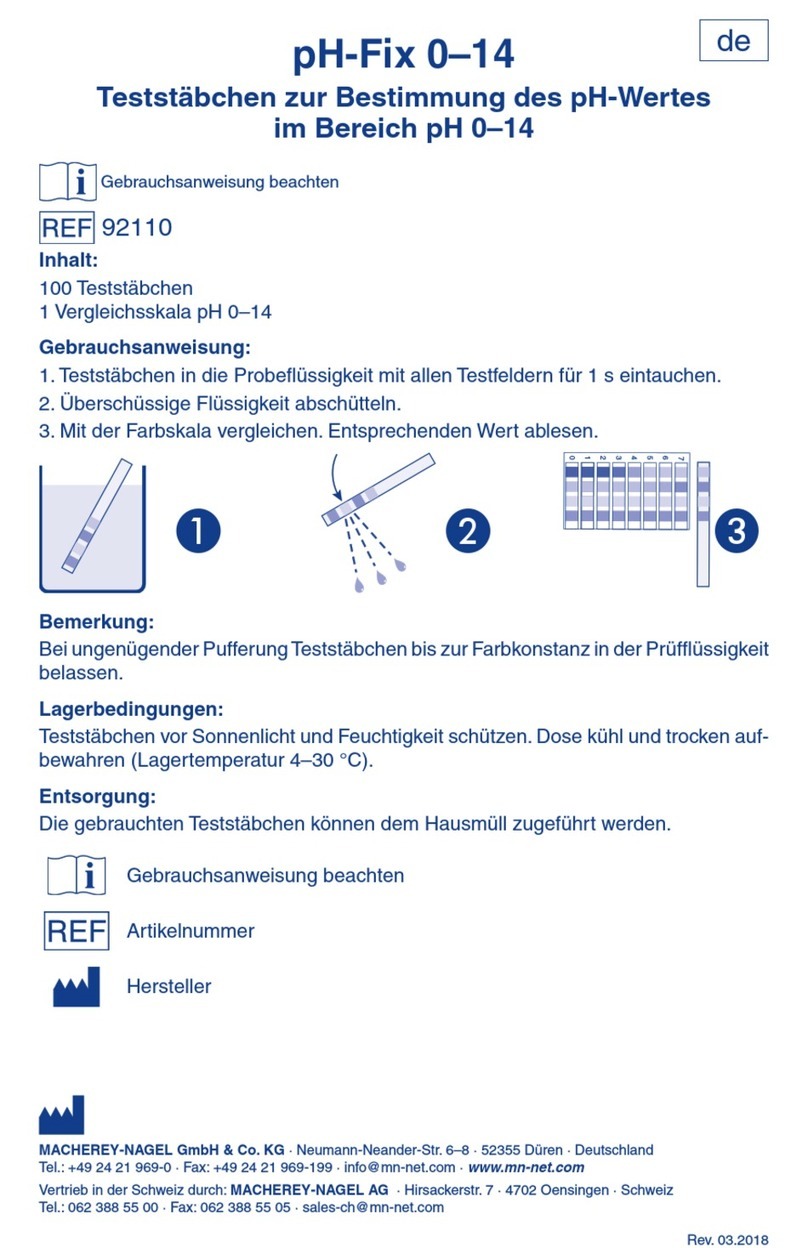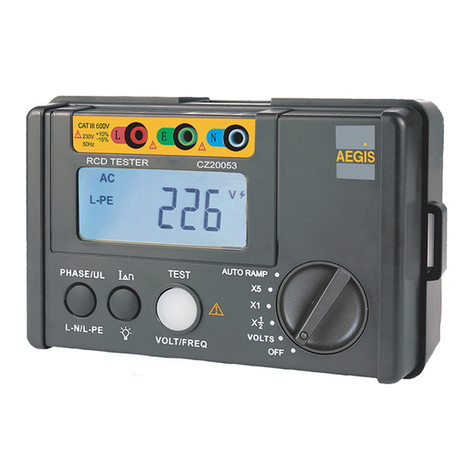Vitalograph 4000 User manual

copd-6 USB
Instructions for Use
MODEL 4000
© Copyright Vitalograph 2020 Current Edition (Issue 2, 29-Oct-2020) Cat. No. 09800

Vitalograph Ltd, UK
Maids Moreton, Buckingham
MK18 1SW
England
Tel: 01280 827110
Fax: 01280 823302
E-mail: [email protected]
www.vitalograph.co.uk
Technical Support
Tel: 01280 827177
Email: [email protected]
Vitalograph Ltd, International
Maids Moreton, Buckingham
MK18 1SW
England
Tel: +44 1280 827120
Fax: +44 1280 823302
E-mail: [email protected]
www.vitalograph.eu
Technical Support
Tel: +353 65 6864111
Email: [email protected]
Vitalograph GmbH
Rellinger Straße 64a
D-20257 Hamburg
Germany
Tel: +49 40 547391-40
Fax: +49 40 547391-40
www.vitalograph.de
Technical Support
Telefon: +49 40 547391-14
E-mail: [email protected]
Vitalograph Inc.
13310 West 99th Street
Lenexa, Kansas, 66215
USA
Toll Free: 800 255 6626
Tel: (913) 730 3200
Fax: (913) 730 3232
E-mail: [email protected]
www.vitalograph.com
Technical Support
Tel: (913) 730-3205
Email: [email protected]
Vitalograph (Ireland) Ltd
Gort Road Business Park
Ennis, Co Clare, V95 HFT4
Ireland
Tel: +353 65 6864100
Fax: +353 65 6829289
E-mail: [email protected]
www.vitalograph.ie
Technical Support
Tel: +353 65 6864111
Email: [email protected]
Vitalograph Ltd, Hong Kong/China
P.O. Box 812
Shatin Central Post Oce
Hong Kong
E-mail: [email protected]
www.vitalograph.cn
Technical Support
Tel: +353 65 6864111
Email: [email protected]
© Copyright Vitalograph 2020
Current Edition (Issue 2, 29-Oct-2020)
Cat. No. 09800
Vitalograph is a registered trademark.
Vitalograph Branch Addresses
DT_0006 Issue 15

1. Main Components of the Vitalograph COPD-6 USB
Figure 1 Vitalograph COPD-6 USB Components
1 User buttons
2 Display
3 Flowhead
4 On / Off button
5 USB Connector
Down Button
Up Button
Enter Button
1.1. Features of the Vitalograph COPD-6 USB
• Early detection of COPD.
• Displays FEV1, FEV6, ratio and % predicted, obstructive
index, COPD classication (stage I - IV) and lung age.
• Identies risk of COPD at pre-symptomatic stage.
• Screens out those with normal FEV1.

• Automatically assesses test quality.
• Large, easy to read display.
• Built-in quality of blow indicator.
• Can be used with SafeTway mouthpiece or Eco BVF.
• Download test results via USB and export to PDF report
using Vitalograph Reports software.
2. Setting Up the Vitalograph COPD-6 USB
To get the COPD-6 USB ready for use:
1. Remove the detachable battery door at rear of unit. Fit two
AAA 1.5V batteries. Replace battery door.
2. Turn on via the On/Off Button. (The same button is used
to power down.)
3. Attach a mouthpiece to the owhead, see Figure 2.
Figure 2. Mouthpiece inserted into owhead
4. Vitalograph intends that a new Eco Bacterial Viral Filter
(Eco BVF) be used for every subject to prevent cross
contamination. Using a new Eco BVF provides a signicant
level of protection of the subject, the device and the user
against the risk of cross contamination during spirometry
manoeuvres. Eco BVF and SafeTway mouthpieces are
single use items and must be disposed of after use.

3. Operating Instructions
If the device has just been unpacked or transported, ensure that it is
left sitting, fully powered and is at room temperature prior to testing.
3.1. Entering Subject Data
The subject’s physical data should be entered into the device in
order to calculate predicted data. There are default values on
the device for age, height, and gender. If default values are used
instead of the subject’s own information, then the predicted data
will not be accurate for the subject being tested.
To enter subject data:
1. Turn device on.
2. Set subject’s age ( ) by pressing the or button to
reach the correct age. Age increases/decreases in values
of 1. If the button is kept depressed, the values scroll
faster. Press to save the age.
3. Set subject’s height ( ) by pressing the or button
to reach the correct height. Height increases/decreases
in values of 1. If the button is kept depressed, the values
scroll faster. Press to save the height.
Note:if height values are set below 100, the device
assumes height is in inches and that Weight will be in Ibs
rather than Kg.
4. Set subject’s gender ( ) by pressing the or button
and releasing when appropriate gender shows: Male ( )
or Female ( ). Press to save the gender. The device
will go to Test Mode showing the Blow Icon. On some
variants, an additional data eld comes rst (see below).
5. (This step may be omitted, depending on the variant. On
some variants this is Weight instead.) The Population
Group can be set ( ) by pressing the or button
and releasing when the desired setting is reached. Press
to save.

Set No. Population Group
1 NHANES III Caucasian C
2 NHANES III African-American AA
3 NHANES III Hispanic-American HA
3.2. Performing the Test
1. Turn the device on.
2. The blow icon shows when the device is ready for a test ( ).
3. Put a SafeTway or Eco BVF lter onto the device.
4. The subject should sit down to blow into the device (unless
a physician advises otherwise).
5. Instruct subject to hold their head high and hold the
Vitalograph COPD-6 USB ready in front of the mouth, see
Figure 3.
Figure 3. Holding device during test.
6. Instruct subject to
a. Breathe in as deeply as possible.
b. Hold the breath.
c. Place the mouthpiece into the mouth (biting the
mouthpiece lightly and sealing the lips rmly around it).
d. Blow out as HARD and FAST as possible until told to stop
(the unit will beep at end of test - after 6 seconds).
e. Repeat the blow two more times.
7. Instruct the subject not to block the mouthpiece with
tongue or teeth. A ‘spitting’ action will give false readings.
8. To view the result (the best values in the session), press
the button.

9. The COPD Classication shows on the right-hand arrow.
• Green is NORMAL, negative for COPD. No need to refer
this subject for spirometry.
• Any one of the blue zones, I, II, III or IV are not normal.
This subject should be referred for spirometry.
10. The Obstructive Index (OI) shows on the left-hand arrow.
• 0 - Green is NORMAL.
• 1, 2 or 3 – Yellow, orange or red are not normal. Refer for
spirometry, but this is unlikely to be COPD.
Note:If the right hand (COPD) arrow is not green, the left hand (OI)
arrow will also not be green.
11. This is the end of the test, but if desired some test
parameters may be viewed.
12. Following each blow and at the end of the test session, the
FEV1 value displays. Below that is the FEV1 % Predicted
results for that blow, or for the best in session if the
button has been pressed. Pressing again will
toggle between best and last blow.
13. Pressing the button shows the FEV6 and FEV6 %
Predicted results.
14. Pressing the button again shows the FEV1/FEV6 and
FEV1/FEV6 % Predicted results.
15. Pressing the button for a nal time shows the estimated
Lung Age. ( )
Notes on testing:
1. During testing, an exclamation mark( ! ) indicates a poor-
quality blow and the user should blow again. Reasons for
poor quality are;
• Slow Start of test: Vext (extrapolated volume) is > 5% or
150mL of FEV6
• Cough detected.
2. In the event that a test is < 3 seconds duration and has an
abrupt end (change in volume is > 25ml in the last second
of the test), the value FEV will be displayed instead of
FEV6.
3. If the subject experiences side effects such as dizziness

or fatigue during the test procedure, stop testing until
recovered.
3.3. Setting the Obstructive Index and COPD Classication
Zones
The device’s Obstructive Index and COPD Classication zones
are set to the GOLD (Global Initiative for Chronic Obstructive Lung
Disease) standard. It is unlikely that a user will need to change this,
however if change is required the instructions are outlined below.
The colour systems for each zone type are pre-set as follows:
FEV1%
Pred.
Obstructive
Index COPD
Classication
FEV1/FEV6
Ratio and
FEV% Pred.
≥ 80% 0 (Green)
Not COPD FEV1/FEV6
> 0.7
Top
Boundary Stage I
FEV1/FEV6
< 0.70and
FEV1 ≥ 80%
Pred.
< 80% 1 (Yellow) Middle
Boundary Stage II
FEV1/FEV6
< 0.70and
FEV1 < 80%
Pred.
< 50% 2 (Orange) Bottom
Boundary Stage III
FEV1/FEV6
< 0.70and
FEV1 < 50%
Pred.
< 30% 3 (Red) Stage IV
FEV1/FEV6
< 0.70and
FEV1 < 30%
Pred.
To set the boundary percentage values for both the Obstructive
Index and COPD Classication zones together:

1. Turn device on, .
2. When the icon appears, press and hold and buttons
for approximately 3 seconds.
3. Set the top boundary by pressing the or button and
releasing when the value is reached. The values increase/
decrease in values of 1%. If the button is kept depressed, the
values scroll faster.
4. Press to save the top boundary value.
5. Set the middle boundary by pressing the or button
and releasing when the value is reached. The values increase/
decrease in values of 1%. If the button is kept depressed, the
values scroll faster.
6. Press to save the middle boundary value.
7. Set the bottom boundary by pressing the or button
and releasing when the value is reached. The values increase/
decrease in values of 1%. If the button is kept depressed, the
values scroll faster.
8. Press to save the bottom boundary value.
9. Press . The device returns to the age entry screen.
3.4. Reviewing Last Session Test Results
The Vitalograph COPD-6 USB always stores the last test session,
even after the device has powered itself down or has been switched
OFF. To view the last test session:
1. Turn the device on.
2. When the device is ready for age entry ( ), press
button for approximately 3 seconds. The last test
session (best results) data will show again.
3. When you have reviewed the data, press the OFF button for 3s.
OR
Press . The device returns to the age entry screen.

3.5. Downloading saved results
The test session may be transmitted to Vitalograph Reports on your
PC to be stored as a PDF le and viewed or printed.
Vitalograph Reports must be installed and running on the PC before
data is transmitted. The software is running if the Vitalograph ’V’
icon shows in the PC System Tray. If not, refer to help button of the
software for more information. Connect the COPD-6 USB device to
the PC using the USB cable to allow communication, see Figure 4.
Drivers should automatically install.
Figure 4. Attached USB cable.
1. Run Vitalograph Reports.
2. If ‘No devices have been detected’ message appears, click
‘Continue’.
a. Turn device on, .
b. In Vitalograph Reports ensure ‘Vitalograph COPD-6’ is
selected via the Device Selection Button
3. To print test results from the COPD-6 USB:
When the device is ready for age entry, press button
for 3 seconds for the last saved session. Use the or

buttons to scroll to the Report icon ( ).Press to
print. Click the “Start” button on the main screen of
Vitalograph Reports.
OR
After completing the test session, press the or
buttons until the Report icon ( ) displays Press
to print. Click the “Start” button on the main screen of
Vitalograph Reports.
4. In Vitalograph Reports enter the Subject Demographic
details and Comments. Select ‘Continue’.
5. Select a location for the test report on your PC. A PDF of
the test results opens and is also stored to the chosen
location on the PC.
4. Power Management
The COPD-6 USB operates with 2 AAA 1.5V disposable batteries.
If the battery symbol ashes the batteries should be replaced.
Replace batteries by removing the battery door on the underside of
the device.
Note: Dispose of used batteries safely.
5. Cleaning & Hygiene
The COPD-6 USB is not designed or supplied as a ‘sterile’ device.
Keep the device clean and dust free. If you suspect the device
is damaged or is measuring incorrectly, contact your medical
professional immediately.
The COPD-6 USB should continue to give reliable measurements for
up to three years in home use including telemedicine applications. It
should then be replaced with a new device.
5.1. Cleaning in Single Patient Environment
For single patient use, the plastic mouthpiece may be used.
Weekly cleaning of the mouthpiece, outside surfaces and owhead
of the device is recommended. A cloth impregnated with 70%
isopropyl alcohol may be used. The plastic mouthpiece may be

washed in warm soapy water and then rinsed in clean water. The
device should be cleaned before and after an extended period of
storage.
5.2. Preventing Cross-Contamination of Subjects in Clinic use
For multi-patient use in a clinic or telemedicine environment
Vitalograph recommends the use of Eco BVF lters or, if these aren’t
available then SafeTway mouthpieces may be used based on the
customer own risk assessment and hygiene controls.
Before use by the next subject, the mouthpiece, outside surfaces
and owhead of the device should be cleaned with a cloth
impregnated with 70% isopropyl alcohol. The device should be
cleaned before and after an extended period of storage. If you
suspect that a device intended for multi-patient use has become
contaminated, it should be replaced.
When used in the clinic environment, it is recommended that
the device be replaced annually. There is no planned preventive
maintenance for this medical device.
6. Fault Finding Guide
Problem Fault
Symptoms: No ow measurements
Possible
Solutions: (In
probable order)
The batteries may be low. Replace the
batteries.
The owhead may be damaged. Check that
the rotating vane is spinning freely.
Problem Fault
Symptoms: Cannot read user interface
Possible
Solution:
The batteries may be low. Replace the
batteries.
7. Customer Service
For further assistance, setting up, using or maintaining the device
or to report unexpected operations or changes in performance,
contact Vitalograph, using the contact information at the start of
this manual. Also contact the healthcare provider on any changes to
the performance of the device, as a precaution.

Service and repairs should be carried out only by the manufacturer,
or by Service Agents approved by Vitalograph. Contact information
for approved Vitalograph Service Agents may be found at the start
of this manual.
Any serious incident that has occurred in relation to the device
should be reported to Vitalograph or its Authorized Representative
and the Regulatory Authorities of the country. Refer to the
Vitalograph contact information at the start of this manual.
8. Consumables and Accessories
Cat. No Description
28501 Eco BVF (100)
28572 Eco BVF + Disposable Noseclips (80)
20242 SafeTway Mouthpieces (200)
20303 Disposable Noseclips (200)
20980 SafeTway Mouthpieces mini (50)
20991 SafeTway Mouthpieces long (130)
40167 Pouch Spare (x10)
40079 USB Cable - 1M MINI-B to USB A
9. Disposal
The device must be taken to separate collection at the product
end-of-life. Do not dispose of these products as unsorted municipal
waste. The pouch can be disposed of in unsorted municipal waste.
Used Eco BVFs and SafeTways, constitute minimally soiled waste
from human healthcare and should be disposed of in line with local
requirements. Eco BVFs are made from 100% polypropylene.

10. Explanation of Symbols
Symbol Description
Type BF equipment
VA Power rating
Direct current
Instructions for Use; operating instructions
Manufacturer
Date of Manufacture (include date in format yyyy-
mm-dd)
The device must be taken to separate collection
at the product end-of-life. Do not dispose of these
products as unsorted municipal waste
Serial Number
Device Order Number
Use by Date (Date format yyyy-mm-dd)
Keep Dry
Do not re-use
Non sterile
Recycle

Symbol Description
QR code - matrix bar code. All information in the bar
code is included in the text under it
Other Labels
Battery status
Battery status Full
Battery status Half
Battery status Quarter
Battery status Empty (ashing)
Blow Now Symbol
!Bad Test Symbol
kglb Unit of Weight/Measurement
Lung Age
Age Icon
Height Icon
Gender Icon
Memory 90% - 100% Full Icon
Flashes when memory reaches 100%
Transmit Report Symbol
11. Description of the Vitalograph COPD-6 USB
The Vitalograph COPD-6 USB is a device intended for measuring
lung function. It can be used by healthcare professionals or
assistants as a rapid pre-spirometry test to screen-out at-risk
individuals who do not have COPD and indicate those who may

be at risk of COPD at the presymptomatic stage. This “screening”
or “case selection” for full spirometry examinations may result in
earlier medical intervention and facilitate better clinical outcomes.
The device displays some key parameters for clinical interpretation:
• FEV1 and FEV1 % Predicted
• FEV6 and FEV6 % Predicted
• FEV1/FEV6 and FEV1/FEV6 % Predicted
If an abnormal result is indicated, arrows on the display show:
• Obstructive Index
• COPD Classication (stages I - IV)
11.1. Indications for Use
The Vitalograph COPD-6 USB is a hand held respiratory monitor
which measures subject respiratory parameters FEV1 and FEV6. It
also displays FEV1 %, FEV6 % Predicted and FEV1/FEV6 ratio. It is
designed for lung function testing of adults and children, 5 years
and older, in the home and professional healthcare environments,
e.g. primary care, hospitals and occupational health centres.
The device is intended to be operated by the patient, under the
supervision of a healthcare provider.
12. Technical Specication
Product Respiratory Monitor COPD-6 USB
Model 4000
Dimensions 109mm (length) x 63mm (width) x
42mm (height)
Weight 63g (not including batteries)
Flow Detection Principal Stator/rotor
Accuracy: Better than ± 3%
Flow Impedance: Better than 0.15kPa/L/s at 14L/s
Back pressure Less than 0.15kPa/L/second @
14L/s
Measurement Range: 0 – 9.99 L BTPS
Power Supply: 2 x AAA batteries

Battery Life
3 months of use, 3 tests per day
(Batteries near the end of their shelf
life will have reduced capacity.)
! Bad Test Criteria: Slow start of test (Vext>5%) or a
cough detected in the rst second
FEV substituted for
FEV6
When FET < 3s and abrupt end of
test
Operating temperature
range 17 – 37°C
Operating humidity
range 30%–75%
Ambient pressure range 850hPa–1060hPa
Performance Standards: ATS/ERS 2019, ISO 23747:2015, ISO
26782:2009
Safety standards EN60601-1, EN 60601-1-11
EMC Standards EN 60601-1-2
QA/GMP standards EN ISO 13485, FDA 21 CFR 820,
CMDR SOR/98-282, JPAL, MDSAP.
Communications USB2.0/3.0
PC Requirements Windows® 7, Windows® 8 or
Windows® 10
Auto power down time Set to 2 minutes as standard
13. Contraindications, Warnings, Precautions and
Adverse Reactions
1. No modication of this equipment is allowed. Any
unauthorised changes to the device may compromise product
safety and/or data and as such Vitalograph cannot be held
responsible and the device will no longer be supported.
2. The device should only be used under the supervision of a
healthcare professional.
3. The device is not designed as a sterile device. Always follow
the safety guidelines given by the manufacturer of cleaning
and disinfectant chemicals.

4. If used for multiple subjects, Vitalograph intends that a new
Eco Bacterial Viral Filter (Eco BVF) be used for every subject to
prevent cross contamination. Using a new Eco BVF provides a
signicant level of protection of the subject, the device and the
user against the risk of cross contamination during spirometry
manoeuvres. An Eco BVF is for single use only.
5. Spirometry is a valuable tool that provides important
information to clinicians which is used together with other
physical ndings, symptoms, and history to reach a diagnosis
(ATS/ERS 2019). And as such, spirometry may support or
exclude diagnosis, but it cannot make one.
6. Take care not to block the mouthpiece with the tongue or
teeth during testing. A ‘spitting’ action or cough will give false
readings.
7. Subject fatigue may occur during testing depending on the
subject’s characteristics e.g. age, health status. For safety
reasons, testing should be preferably done in the sitting
position, using a chair with arms and without wheels. Subject
can also take a break between tests.
8. All values displayed are expressed as BTPS values.
9. Time zero is determined using the back-extrapolated method,
from the steepest part of the curve.
10. Symptoms must take precedence over device measurements.
If the patient at home thinks that the device is not reading
correctly, they must advise the healthcare professional
immediately.
11. Do not expose the device to liquids other than cleaning liquids
specied.
12. Keep device dry. If the device gets wet, do not use it, and
contact Vitalograph using the contact information at the start
of this manual. Do not connect any part of this device to mains
power as there is a risk of injury especially if the device is wet.
13. The device is not intended to be used in the presence of
ammable liquids or gases, dust, sand or any other chemical
substances.
14. Service and repairs should be carried out only by the
manufacturer or by Service Agents specically approved by
Vitalograph.

15. RF communications equipment (including peripherals such
as antenna cables and external antennas), which emit
electromagnetic elds, should be used no closer than 30 cm
(12 inches) to any part of the device, including cables specied
by Vitalograph. Otherwise, degradation of the performance of
this equipment could result.
16. The device is a Type BF applied part. The subject comes into
contact with the device, mouthpiece, SafeTway or Eco BVF
during use.
17. The USB cable is a potential strangulation hazard. Adult
supervision is required at all times when a child is using the
device.
18. Take care during battery replacement. An AAA battery is a
potential choking hazard for a small child. Adult supervision
is required at all times, when a child is using the device. The
battery door, when removed, has pointed corners which may
present a risk of injury.
19. The batteries should be removed if the device is intended to be
stored or left unused for an extended period of time.
20. Only approved accessories from the manufacturer should be
used with the device. It may be unsafe to use accessories,
detachable parts and materials not described in this document.
21. Non-Medical Electrical equipment used with the device, should
comply with its relevant IEC or ISO standard.
22. For the device to be used as intended, there is no requirement
to clean the supporting computer. If cleaning is required to
remove any visible soiling, this should be done as per the
computer manufacturer’s instructions.
14. CE Notice
Marking by the symbol indicates compliance of the
Vitalograph Model 4000 COPD-6 to the Medical Devices Directive of
the European Community.
The Vitalograph Model 4000 COPD-6 is intended for use in a
variety of professional healthcare environments, e.g. primary care,
hospital wards and occupational health centres, except for near

active high frequency surgical equipment and the RF shielded
room of an ME system for magnetic resonance imaging, where the
intensity of electromagnetic disturbance is high. The customer or
the user of the COPD-6 should assure that it is not used in such an
environment.
The Model 4000 COPD-6 has been tested in accordance with:
EN60601-1:2006 + A1:2013
Medical electrical equipment. General requirements for basic safety
and essential performance
EN 60601-1-11: 2015
Medical electrical equipment. General requirements for basic safety
and essential performance. Collateral Standard: Requirements for
medical electrical equipment and medical electrical systems used
in the home healthcare environment.
EN 60601-1-2: 2015
Medical electrical equipment - Part 1-2: General requirements
for basic safety and essential performance - Collateral Standard:
Electromagnetic disturbances - Requirements and tests.
EN 60601-1-2 - Emissions tests
Emissions
test Compliance Electromagnetic environment -
guidance
RF emissions
CISPR 11 Group 1
The Model 4000 COPD-6 uses
RF energy only for its internal
function. Therefore, its RF
emissions are very low and
are not likely to cause any
interference in nearby electronic
equipment.
Other manuals for 4000
4
This manual suits for next models
1
Table of contents
Other Vitalograph Test Equipment manuals
Popular Test Equipment manuals by other brands
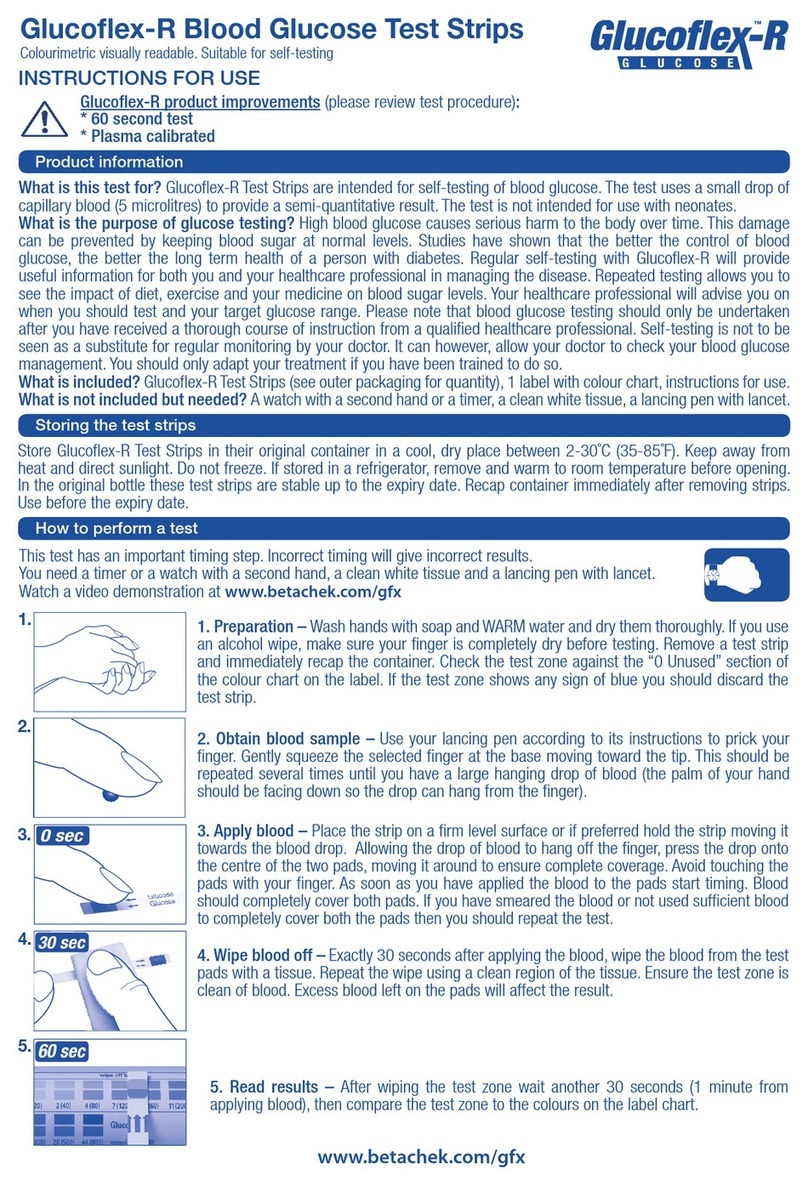
BETACHEK
BETACHEK Glucoflex-R Instructions for use
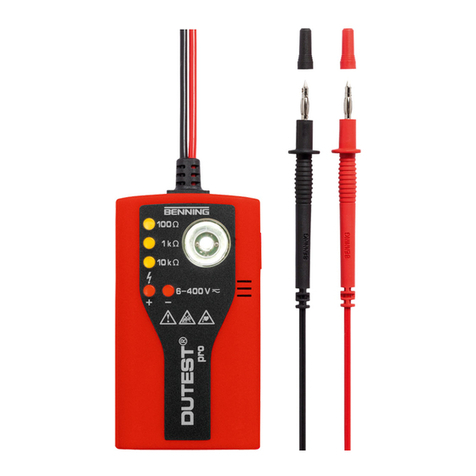
Benning
Benning DUTEST pro operating manual

Sperry instrument
Sperry instrument PSI 8030 operating instructions
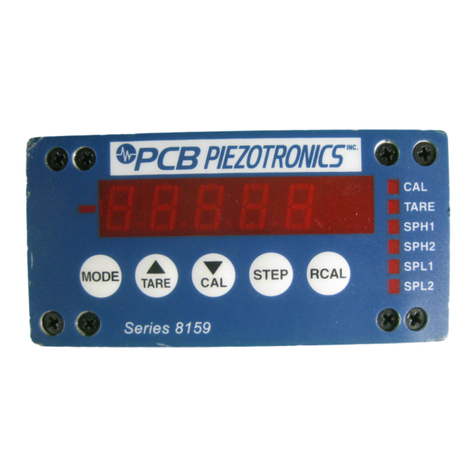
PCB Piezotronics
PCB Piezotronics F8159-0012A Installation and operating manual

Fluke
Fluke 975 AirMeter Application note

Cole Parmer
Cole Parmer 90225-00 operating instructions

Extech Instruments
Extech Instruments VT30 user guide

Dräger
Dräger Alcotest 5510 Instructions for use
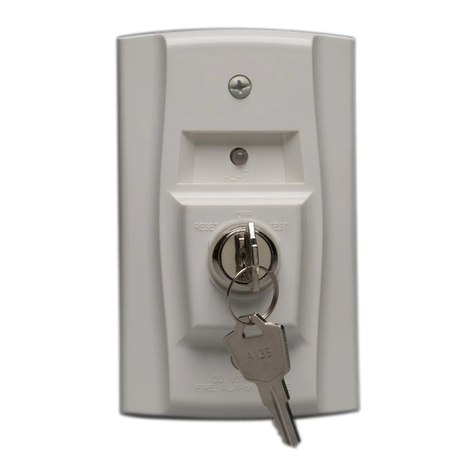
System Sensor
System Sensor RTS151KEY Installation and maintenance instructions

Fluke
Fluke 1537-II user manual
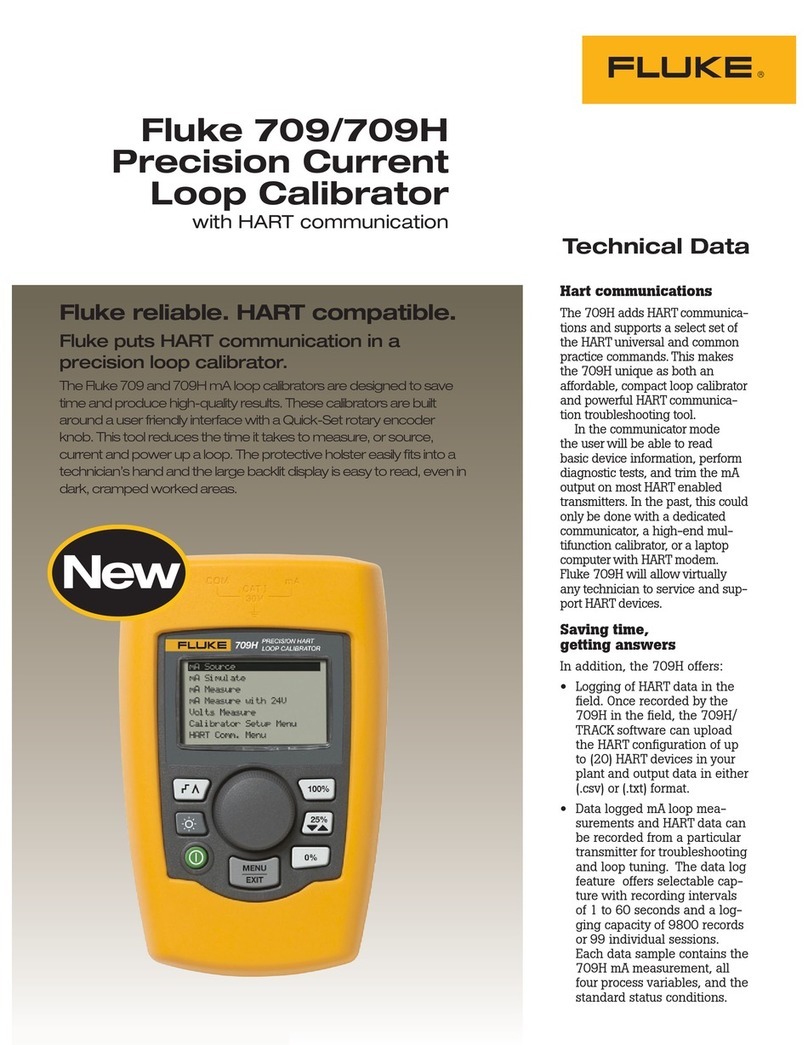
Fluke
Fluke 709 Technical data
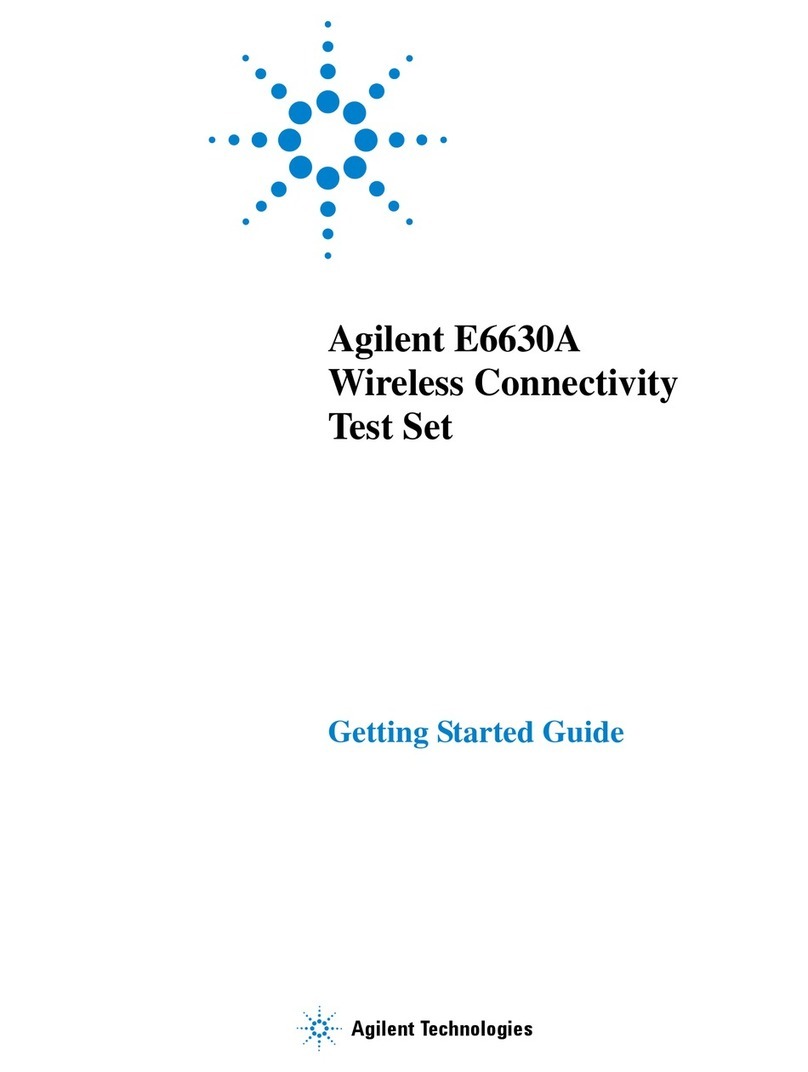
Agilent Technologies
Agilent Technologies E6630A Getting started guide
